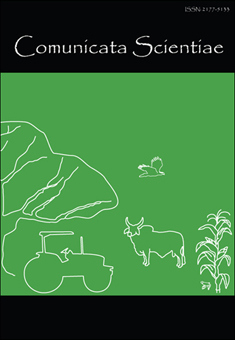Correlation between apparent electrical conductivity and chemical and physical attributes of a Rhodic Hapludox
DOI:
https://doi.org/10.14295/cs.v6i2.354Keywords:
Precision agriculture, Brazilian savannah, sensors, management zonesAbstract
Precision agriculture has been used as an important technique for localized management of soil fertility. Therefore, it is essential to characterize the spatial variability of chemical and physical attributes of the soil by sampling can represent such variations. This study aimed to analyze the correlation between the apparent electrical conductivity with the chemical and physical attributes of an Rhodic Hapludox. The work was performed on a property located in the Brazilian Cerrado. In an area of 90 hectare were collected 181 georeferenced soil samples at depths from 0.00 to 0.20 meters. The same sites and removal of samples were made apparent electrical conductivity of the soil. The samples were sent to the laboratory to perform the physical and chemical analysis. Were selected randomly sampling 30 points and calculated the Pearson correlation coefficient between the variable physical, chemical and apparent soil electrical conductivity. There was no significant correlation between the apparent electrical conductivity with the soil physical attributes. There was a significant positive correlation of apparent electrical conductivity of the soil at a depth of 0.20 m with the chemical attributes match, remaining phosphorus and zinc.Downloads
Download data is not yet available.
Downloads
Published
2015-07-08
How to Cite
Bottega, E. L., Queiroz, D. M. de, Santos, N. T., Pinto, F. de A. de C., & Souza, C. M. A. de. (2015). Correlation between apparent electrical conductivity and chemical and physical attributes of a Rhodic Hapludox. Comunicata Scientiae, 6(2), 134–142. https://doi.org/10.14295/cs.v6i2.354
Issue
Section
Original Article
License
All articles published may be reproduced or utilized in any form or by any means whether specified Comunicata Scientiae, author(s), volume, pages and year. The authors are responsible for all the statements and concepts contained in the article.




